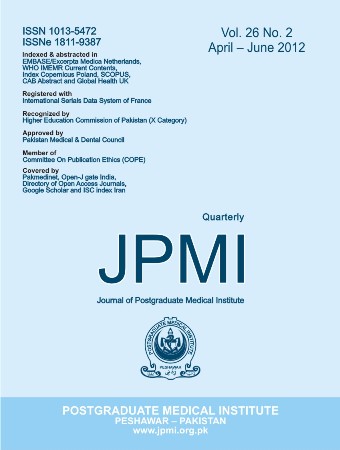OBSTRUCTIVE UROPATHY: CAUSES AND OUTCOME IN PEDIATRIC PATIENTS
Main Article Content
Abstract
Objective: To pinpoint the major causes of obstructive uropathy in children and determine the outcome interms of renal impairment and mortality.
Methodology: This observational study included pediatric patients presenting with obstructive kidneydisease. All consecutive pediatric patients (< 12 years) presenting with signs and symptoms of obstructiveuropathy ± chronic kidney disease (CKD) for the duration of 3 months or more represented by a GFR of <52 ml/min/m2 were included while patients with co-morbidities representing independent mortality risk likecongenital heart diseases and with non-obstructive causes of renal failure and patients with no evidence ofurinary tract obstruction on either ultra sonogram or renal scan were excluded. They were categorizedinto five segments and the outcome of the treatment at the end of follow up period of 2 years was recordedand categorized similarly to eliminate any bias.
Results: Forty three patients were recruited initially but 3 were excluded. The mean age was 5.3 yearsand there were 33 (82.5%) males. Majority had severe growth retardation. Posterior urethral valve (45%)and nephrolithiasis (35%) were commonest causes. The mean serum creatinine on admission was 6.35(1.2–22) mg/d and at the end of follow up had reduced to 1.6 (0.4–3.2) mg/dl. (p= 0.0017). Post treatment27 (67.5%) patients had no residual renal impairment while only 5 patients (12.5%) patients developedESRD and were referred for transplant.
Conclusion: We conclude that obstructive uropathy is an important cause of preventable renal failure inchildren.
Article Details
Work published in JPMI is licensed under a
Creative Commons Attribution-NonCommercial 2.0 Generic License.
Authors are permitted and encouraged to post their work online (e.g., in institutional repositories or on their website) prior to and during the submission process, as it can lead to productive exchanges, as well as earlier and greater citation of published work.


